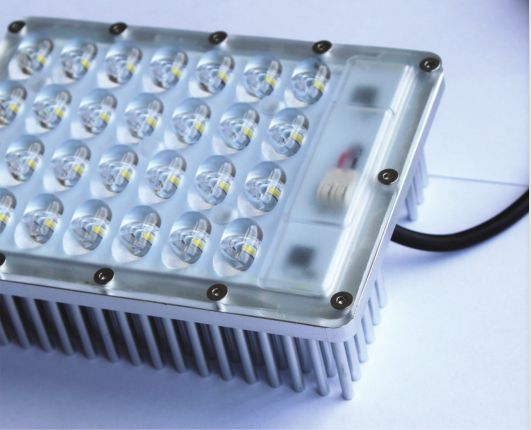1. Fertilizer before and after fruit picking: Mango has more fruits and higher yield. The nutrient level of the tree is the lowest in the year. If it is not applied in time, the tree will be weak and it will be difficult to resume growth, which will affect the cultivation of the mother branch and the leap year. Results and yield. Before and after harvesting, the fertilizer is the focus of fertilization throughout the year, and the amount of fertilizer applied accounts for 60% to 80% of the whole year.
Mango fertilization before harvesting is generally based on top dressing. In the 30 to 45 days before harvesting, it can be combined with spraying to treat diseases, and some foliar fertilizers containing high phosphorus and potassium are sprayed. In addition, spraying the fruit trees in the 60 days before harvest can inhibit the photorespiration consumption of the plants, increase the accumulation of photosynthetic products, and improve the quality and yield.
After mango picking fruit, fertilization can be carried out twice: the first fertilization is generally applied in the middle and late August, with quick-acting fertilizer as the main purpose, so that the tree body can be restored as soon as possible, and the autumn shoots are sprouted as soon as possible. Each tree is compounded with 0.5 to 1.0 kg of urea and 0.3 to 0.5 kg of urea. Drill the circular groove on the inside of the canopy drip line. In case of dry weather, water should be applied after fertilization. The second fertilization combined with deep-turning soil modification is generally carried out from mid-November to December, mainly based on farmyard manure, 20-30 kg of farmer's fertilizer per plant, 1 kg of lime, 0.5-1 kg of compound fertilizer, and 0.3 kg of potash. ~0.5 kg, each plant added 10-15 kg of fire mud, can promote the heading and flowering of the tree.
Second, strong flower fertilizer: early spring flower buds before a large number of germination or a large number of germination, should apply a certain amount of quick-acting fertilizer in a timely manner, promote the development of flowering and florets, improve the quality of flowers, increase the proportion of bisexual flowers, enhance the resistance of plants to low temperature and rain The ability of the weather to increase the rate of fruit set. Each plant can be applied with 0.2 to 0.3 kg of compound fertilizer, or 0.2 kg of peanut bran, 0.2 kg of potassium chloride or potassium sulfate, and 0.1 to 0.15 kg of urea. Before the full bloom period and during the flowering period, 500 times of boric acid is sprayed once, and it can be combined with pest control to spray the leaves in the pesticide.
Third, strong fruit fertilizer: Mango fruit after the fruit from the middle of April to June, is the rapid growth of young fruit, but also the summer shoots. Fertilization in this period has the direct effect of supplying nitrogen and potassium, and it also has the effect of coordinating the contradiction between branch and fruit nutrient distribution. Only by fertilizing to meet the nutritional requirements of fruit development, but also depends on the tree potential, the amount of fruit and the color of the leaves. The tree is prosperous, and the plants with less fruit can be applied less or not, otherwise it will promote the summer shoots and increase the fruit drop. The tree is weak, and the fruit with more fruit should be applied to the quick-acting fertilizer. The compound fertilizer is 0.2-0.3 kg per plant, the potassium fertilizer is 0.15-0.2 kg, and the foliar fertilizer can be sprayed 2 to 3 times. Generally, the green flour series foliar fertilizer is used. Or 0.2% potassium dihydrogen phosphate can be sprayed in combination with insect control.
Source of information: Yunnan Science and Technology News
The unique acicular radiator,360 degree dissipation small wind resistance. High heat dissipation efficiency ensuring that the LED chip can work for 50000 hours.
Color temperature 3000-6000K
Light≥90LM/W
Matching the 2.3.4 lane,tunnel and Landscape Lamp,floodlight dedicated lens.Ensure that intensity and uniformity.
Glare index Signification reduce the original LED module size,removal of power supply problems.Low demands for application situation and installation personnel More suitable for the transformation of traditional lamps.

Technical parameters
Power :30W,30W,15W,15W
Structure size: 135×100×40 mm, 208×74×49 mm, 125×58×30mm, 380×40×25mm
Lens size: 135×100 mm, 186×64 mm, 125×58mm, 355×40mm
Input voltage: 220 V, 220 V ,220 V, 220 V
Input current: 0.132 A, 0.132 A ,0.123 A, 0.125 A
Luminous flux: 2760 LM ,2400 LM ,1230 LM ,1300 LM
Light effect: 92 LM/W 80 LM/W 82 LM/W 86 LM/W
Color temperature: 5000 K 5000 K 5000 K 5000 K
Power factor: 0.99 PF 0.98 PF 0.98 PF 0.99 PF
Working temperature: -40+50°C, -40+50°C, -40+50°C ,-40+50°C
Led Module,Led Modules For Signs,Led Module Bulb,Led Modules For Signage
Jiangsu chengxu Electric Group Co., Ltd , https://www.chengxulightings.com